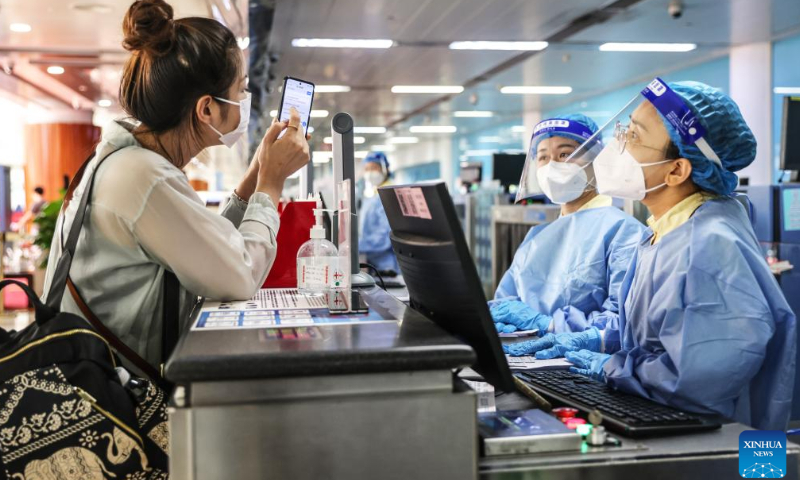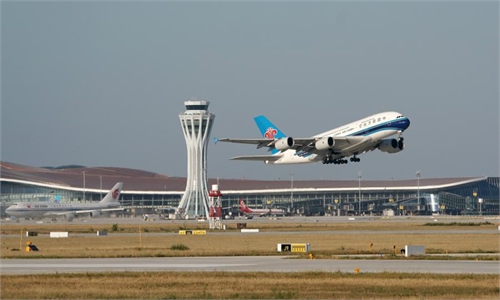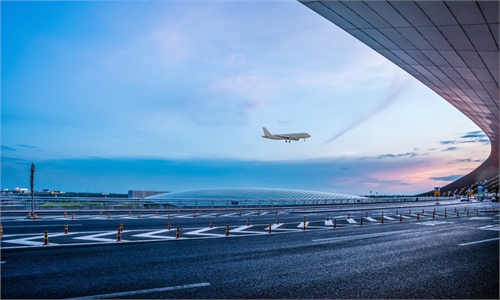Eight Chinese airlines recorded combined losses of $10 billion in first half of 2022, as the coronavirus continues to bite

A stranded tourist checks in at Haikou Meilan International Airport in Haikou, south China's Hainan Province, August 14, 2022. Photo: Xinhua
Eight listed Chinese airlines recorded combined losses of nearly 70 billion yuan ($10.16 billion) in the first half of 2022, latest company reports showed, as Covid-19 related pressures kept carriers in the negative territory.Air China recorded the largest loss of 19.44 billion yuan, almost double the loss incurred during the same period last year. China Eastern Airlines, Hainan Airlines and China Southern Airlines each announced respective losses of more than 10 billion yuan.
The combined losses of the country's top three carriers, Air China, China Eastern and China Southern came in with a record high of -49.7 billion yuan, eclipsing last year's figures.
According to each airline's financial report, combined total net loss attributable to shareholders of the three major airlines last year amounted to 40.959 billion yuan.
Passenger revenue fell sharply for all major carriers, with China Eastern recording the lowest passenger revenue. The Shanghai-based carrier said restrictions put in place from middle of March to the end of May significantly impacted commercial traffic with the number of flights departing and arriving at Shanghai's two airports suffering an acute decline.
China's three aviation giants all witnessed an increase in company debt as of June 30, of which the total liabilities held by China Eastern amounted to 254.992 billion yuan, an increase of 10.08 percent over the end of the previous year.
Fuel costs for the three airlines stood at 33.703 billion yuan, accounting for more than one fourth of the operating costs. Among them, China Southern recorded the highest jet fuel cost, reaching 14.395 billion yuan, a year-on-year increase of 16.69 percent.
Data from the Civil Aviation Administration of China confirmed the challenging market conditions announcing that the total turnover of China's civil aviation transportation was 29.34 billion ton-kilometers in the first half of 2022, accounting for only 46.7 percent of the same period in 2019, with passenger traffic coming in at 118 million, falling to 36.7 percent of the same period in 2019.
Although the number of domestic flights rebounded from their lowest point in April 2022, pointing to a degree of recovery momentum, operational efficiency indicators such as passenger turnover and passenger load factor have not yet returned to pre-pandemic levels.
However, market watchers said the gradual recovery of international flights will offer much needed confidence to the market, with international routes viewed as an important pillar for airlines to stem losses.
The first half of this year was a low point for China's civil aviation industry, with a half-year loss of more than 90 billion yuan, more than the full-year loss in any past year, Lin Zhijie, an independent market watcher told the Global Times on Wednesday, but he predicted that second half performance may climb back.
Global Times


